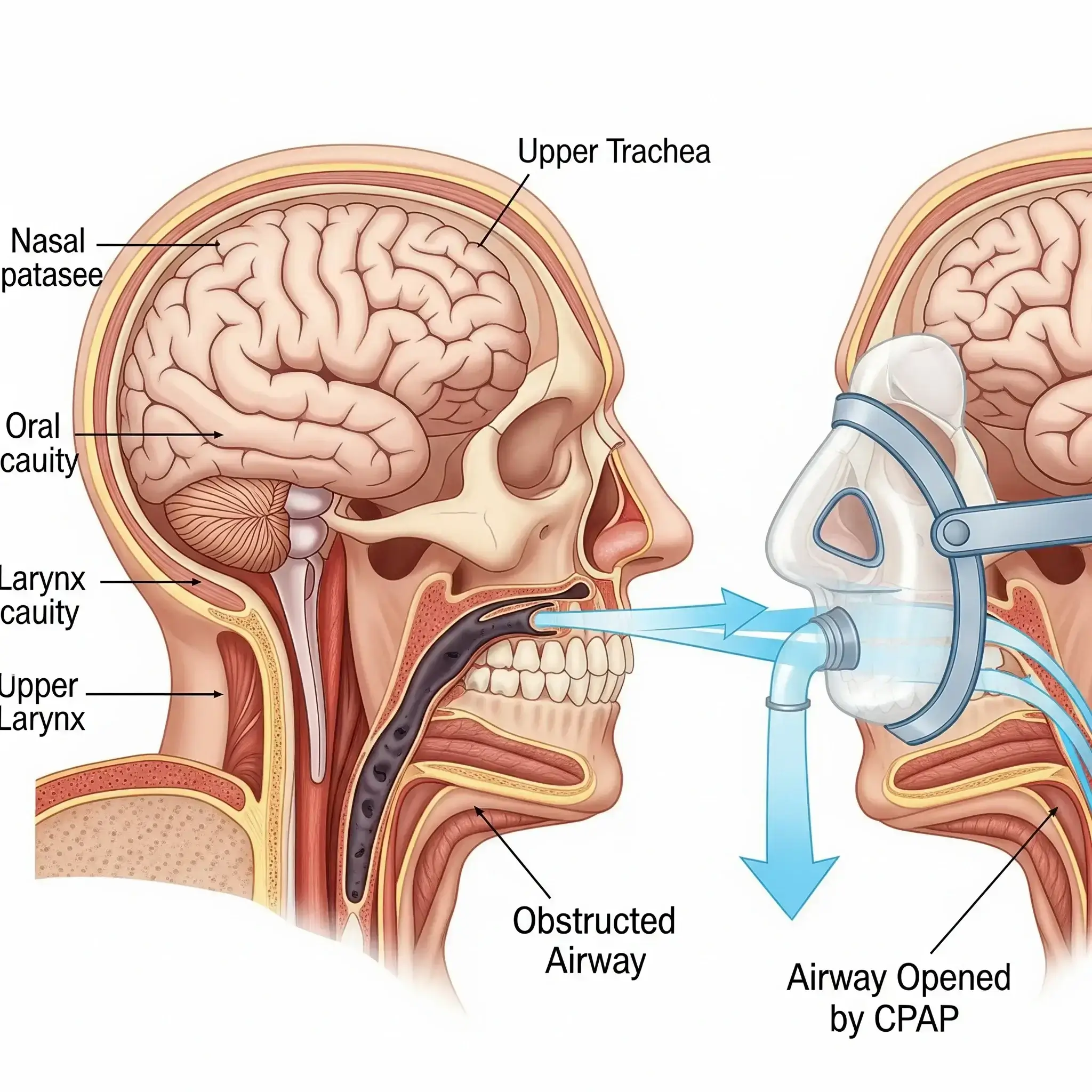What is Obstructive Sleep Apnea (OSA)? Causes and Risks
Obstructive Sleep Apnea (OSA) is one of the most common yet underdiagnosed sleep disorders worldwide. It affects millions of people, often silently, disrupting their sleep quality and putting their overall health at risk.
If you’ve been told that you snore loudly, gasp during sleep, or feel excessively tired during the day, you might be experiencing symptoms of OSA.
This blog explains what OSA is, how it happens, its main causes, and the serious health risks it poses if left untreated.
What is Obstructive Sleep Apnea (OSA)?
Obstructive Sleep Apnea is a sleep disorder in which breathing repeatedly stops and starts during sleep due to a physical blockage in the upper airway.
When you sleep, the muscles in your throat relax. In people with OSA, these relaxed muscles allow the soft tissues at the back of the throat to collapse and block the airway temporarily.
This leads to:
- Pauses in breathing (apneas) that can last from 10 seconds to over a minute
- Loud snoring, choking, or gasping sounds during sleep
- Fragmented, poor-quality sleep
Your brain briefly wakes you up to reopen your airway, often without you realizing it. This can happen dozens or even hundreds of times every night.
Causes of Obstructive Sleep Apnea
OSA can occur in anyone, but several risk factors increase the chances of developing it. Common causes and contributing factors include:
- Excess weight or obesity: Fat deposits around the neck can narrow the airway.
- Anatomical factors: Large tonsils, a thick neck, or a small jaw can obstruct airflow.
- Age: The risk increases as you get older due to muscle tone loss in the throat.
- Gender: Men are more likely than women to develop OSA, though risk rises in post-menopausal women.
- Family history: Genetics can play a role in airway structure.
- Nasal congestion: Chronic congestion makes breathing through the nose harder during sleep.
- Lifestyle factors: Alcohol, smoking, and sedative use relax throat muscles, worsening airway collapse.
Health Risks of Untreated OSA
Leaving OSA untreated can lead to serious and sometimes life-threatening complications, including:
- Daytime fatigue and poor concentration — due to frequent sleep disruptions
- High blood pressure (hypertension) — caused by oxygen level drops and stress on the heart
- Heart disease and stroke — long-term strain on the cardiovascular system
- Type 2 diabetes — worsened insulin resistance and blood sugar control
- Arrhythmias (irregular heartbeat) — especially during night-time oxygen dips
- Depression and mood disorders — linked to chronic sleep deprivation
- Increased risk of accidents — from drowsiness and slowed reaction time
When to See a Doctor
If you notice symptoms like loud snoring, witnessed breathing pauses, morning headaches, or persistent daytime tiredness, consult a doctor or sleep specialist.
They may recommend a sleep study test (polysomnography) to diagnose the severity of your OSA and begin appropriate treatment such as CPAP therapy or lifestyle changes.
Effective Management and Treatment:
- Continuous Positive Airway Pressure (CPAP) Therapy: This is the most common and highly effective treatment for OSA. A CPAP machine delivers a continuous stream of pressurized air through a mask worn during sleep. This air pressure gently keeps your airway open, preventing collapses and ensuring uninterrupted breathing.
- Lifestyle Modifications:
- Weight Loss: Even a modest amount of weight loss can significantly reduce OSA symptoms.
- Avoid Alcohol and Sedatives: Especially before bedtime, as they relax throat muscles.
- Quit Smoking: Smoking irritates the airway and contributes to inflammation.
- Sleep Position: Sleeping on your side rather than your back can sometimes help prevent airway collapse.
- Oral Appliances: Custom-fit dental devices can help reposition your jaw or tongue to keep the airway open. These are usually for mild to moderate OSA.
- Surgery: In some cases, surgical procedures may be an option to remove or reshape tissue in the throat or jaw to improve airflow. This is typically considered when other treatments haven't been successful.
Conclusion: Breathe Easy, Live Fully with OSA Management
Obstructive Sleep Apnea (OSA) is a serious condition, but it is treatable. Recognizing its symptoms and understanding its causes are the first vital steps toward effective management. By addressing OSA, you not only improve the quality of your sleep but also significantly reduce your risk of numerous severe health complications.
Don't let OSA diminish your quality of life. If you suspect you or a loved one has this condition, consult a sleep specialist. At Healthy Jeena Sikho, we are dedicated to providing comprehensive home healthcare solutions, including top-of-the-line CPAP and BiPAP machines, to help you breathe easier and enjoy the restorative sleep you deserve. Reclaim your nights and embrace a healthier, more energetic life!

